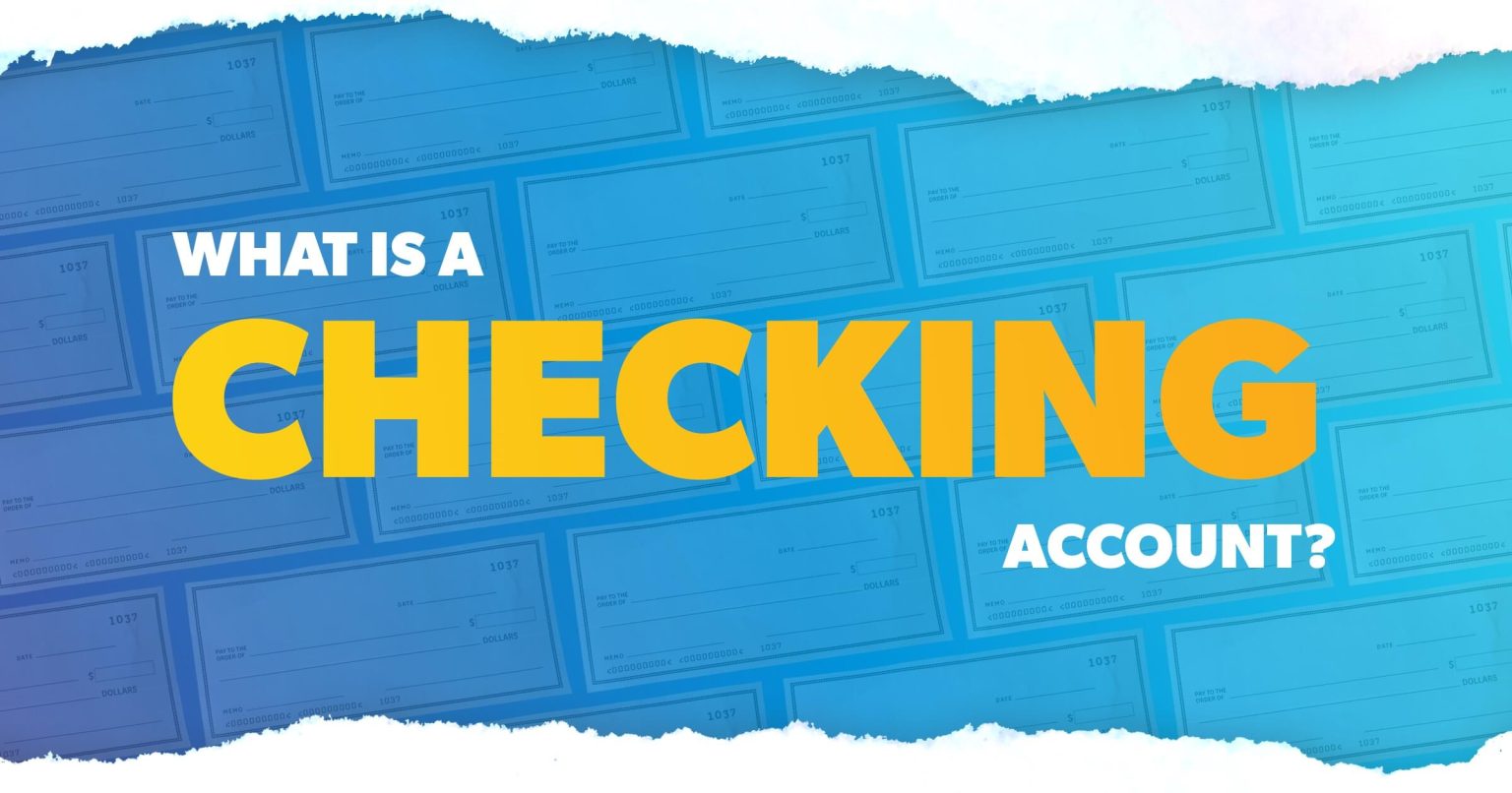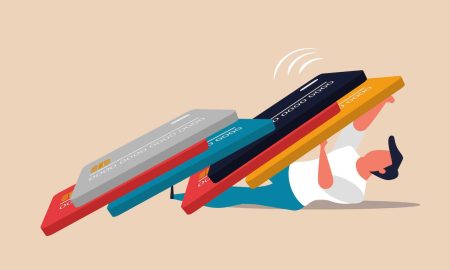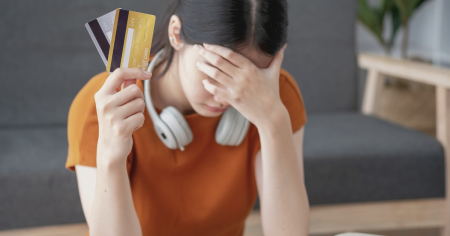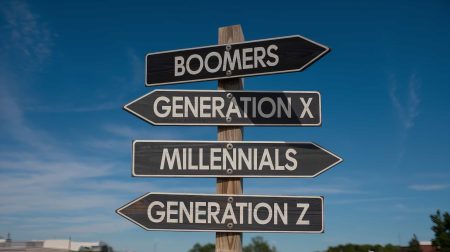Nothing says “I’ve reached adulthood” like opening up your own checking account. Maybe you just got your first real job and have to set one up for the direct deposit of your paycheck, or maybe you just realized you’re sick of carrying around your life’s savings in your sock all day. Whatever the case, the good news is—setting up a checking account is easy.
So, what is a checking account, and how does it work? Here’s everything you need to know about checking accounts.
What Is a Checking Account?
A checking account is a type of banking account used for depositing money and taking out money. It’s like a wallet, only it’s way safer since you don’t have to carry all your money around with you at once. And it works a heck of a lot better than stuffing all your cash under your mattress.
So, basically, checking accounts hold the money you need quick access to so you can make all your daily purchases and pay bills. Most checking accounts come with a debit card and paper checks.
P.S. Checking accounts are a total no-brainer to have on your path to ditching credit cards for good. Why? Because your checking account is filled with real money, not fake credit card money. And having a checking account will help you spend and budget for the money you actually have instead of spending fake money you don’t have.
So, what is a checking account? When it all boils down, it’s just a simple way to keep tabs on your money.
How Does a Checking Account Work?
It’s pretty simple—a checking account lets you deposit money and spend money. Whenever you buy things using your checking account, you’ll see the money come out of your account each time you pay.
Remember, your checking account is linked to a debit card and paper checks. So whenever you buy stuff at checkout—whether you swipe your debit card in person or buy something online—the money is automatically taken out of your checking account balance. And if you write a check, it’ll take a few days for the check to clear and the amount to come out of your bank account.
How to Get a Checking Account
Okay, so maybe your question isn’t, “Hey, what is a checking account?” Maybe the real question on your mind is, “How do I even get one?”
These days, there are really just two ways to open a checking account. For starters, you can walk into a traditional bank or credit union and ask to set one up. But if you’d rather not deal with people, you can open up a checking account with an online bank and handle everything that way. Let’s take a look at both options.
Open a Checking Account at a Bank or Credit Union
There are about a zillion banks out there to choose from. So even though opening a checking account isn’t hard to do, sometimes choosing a bank is. But before picking a bank, you’ll want to think about things like balance minimums, maintenance and overdraft fees, and how many ATMs they have around.
You can go the mom-and-pop route where you’re pretty much guaranteed to get more attention and better customer service. Or you can go the big bank route—you know, the ones that pay ridiculous amounts of money to have their names put on sports arenas. With these guys, just count on being treated more like an account number than a human being.
Things You Might Need:
No matter which bank you choose, there are a few pieces of information just about any bank will ask for before you can open a checking account:
- Personal identification (driver’s license or passport)
- Proof of address (something that shows where you live—like a utility or cable bill)
- Usually an opening deposit amount (this might be as little as $25)
Some banks might want two pieces of ID from you on top of your driver’s license—like a Social Security card or birth certificate. If you’re not sure what information your bank needs, call ahead and double-check before you make a trip to the bank.
Budget every dollar, every month. Get started with EveryDollar!
Once you have everything set, all you need to do is walk in and talk with a bank teller. They can tell you who you need to talk with to set up your brand-new checking account.
Open a Checking Account With an Online Bank
Plenty of people have already made the switch to banking online. Handling all your banking needs right from a banking app or laptop makes things simple. Still, those people probably have a brick-and-mortar bank they can walk into if they ever need to talk with a teller.
But with a bank that’s completely online, that means no tellers, no drive-through services and no lollipops for the kids—none of the human stuff you get at a traditional bank. So if you like the idea of keeping everything online all the time (and not having to deal with people), then an online bank might be the route for you.
Things You Might Need:
Like a traditional bank, online banks will need some proof that you are who you say you are before they’ll give you a checking account. You know, the basics. Things like:
- Personal identification (driver’s license or passport)
- Proof of address
- Social Security number
- Usually an opening deposit amount
Now, here’s the tricky thing about some online banks: They might require an initial deposit to set up your checking account. But guess where that money needs to come from. A debit card or check tied to an existing bank somewhere else in the world.
So, if you’re making the move from a traditional bank or another online bank to a new online bank, it’s pretty straightforward. But if you’re setting up a checking account for the very first time with a strictly online-only bank, you’ll need to deposit money into your new account through a money order. It’s not the end of the world—just an annoying hoop to jump through.
Basics of a Checking Account
Once you have your checking account set up, using it is pretty easy. Here are some of the basics you’ll find that come along with your checking account.
Debit Card
When you open a checking account, you’ll get a shiny new debit card (and probably a set of paper checks too). If you’re at a traditional bank, you’ll probably get your debit card there on the spot.
But if you’re signing up for a checking account through an online bank, your debit card will show up in the mail, usually in about seven to 10 business days. Whenever your card comes in, remember that your debit card is connected to your bank account—aka treat it like cash and keep it safe.
Just about anywhere you shop will take debit cards—unless there’s a “cash only” sign at the register (like at that snow cone place you like to hit up). But just because a place will take your debit card, don’t get swipe happy here. Remember, your debit card is connected to real money. And it can fly out of your bank account faster than you can say, “Whoops.”
Checkbook
When you open a checking account, you’ll probably get a few temporary checks until the ones with your name printed on them arrive in about two weeks.
Checks work the same way as a debit card, just a whole lot slower. If a debit card is like email, checks are like snail mail. But just because it might take a few days for the money to come out of your bank account after using a check, that doesn’t mean you still have that cash to your name. Nope! When you write a check, tell yourself that money is already gone. If you don’t, this is where people with low checking account balances can get into real trouble.
Say you give your nephew a $100 check for his high school graduation. You keep waiting for him to cash it, but three months later—still nothing. He never cashed the check, so you never took out the $100 from your records. Time goes on and you totally forget that your checking account shows $100 more than you actually have. You end up spending that $100. Twice. It’s only when you get hit with a $35 overdraft fee and a $35 returned check fee that you realize your slowpoke nephew finally cashed your check. And those other purchases you made? Well, they put your account in the negative.
Now, that’s not a PSA to not use checks. It’s okay to still use paper checks, but if you do, don’t forget to balance your checking account. That’s life skills 101 right there. And remember, just like a debit card, checks are directly tied to your bank account. So treat them like cash, and keep them somewhere safe.
Direct Deposits
These days, most employers want to use direct deposit to drop your paycheck into a checking or savings account. Gone are the days of waiting for your paper check to arrive, driving to the bank, waiting in line, and then depositing your check. Instead, boom—there it is right on time each and every payday!
Mobile Check Deposit
What about other checks that don’t come from your employer? Don’t worry, you can still use direct deposit to get that birthday check from Grandma into your bank account. And you never even have to leave your house. Most banks nowadays have their own mobile apps where you can snap a picture of the front and back of a check and drop it straight into your checking account. Plus, you can also deposit cash into your checking account.
And let’s not forget all the digital wallet and money-sharing apps that exist today, like Venmo, CashApp and even PayPal. They let your friends transfer their portion of the dinner bill or rent right into your checking account so you don’t have to bug them about it.
Online Bill Pay
With online bill pay, you can have all your bills come right out of your checking account on the day they’re due. No more losing envelopes or scrambling to find a stamp to mail in your check. Just make sure you know when your bills are due (and budget for them!) so you don’t overdraw your account.
Transfer Funds
With a checking account, it’s super simple to transfer funds into your savings account—making it even easier to hit your goals. So if you’re trying to get your $1,000 emergency fund in place, saving for Christmas, or finding leftover money in your budget at the end of the month, you can slide that extra cash in your checking right on over to your savings. Simple as that.
Wait—you don’t have a savings account yet? Well, when you open a checking account, that’s also the perfect time to start a savings account. So when you’re researching banks, check out what kind of interest rates they offer for savings. It’s usually not a lot (like less than 1%), but hey, better in your pocket than theirs! And don’t forget to check out interest rates at online banks too. Some of them will give you over 1% interest on your money. We’ll take it!
ATM Access
One of the easiest ways to watch your hard-earned money disappear before your very eyes is to use ATMs that charge a fee. Yuck. Stay away!
When you open a checking account, find out where your bank’s ATM locations are. If you’re not a huge ATM user, then this isn’t that big of a deal. But if you use ATMs a lot, it’s worth it to know where your bank has fee-free ATMs.
A lot of smaller banks and credit unions will partner with grocery stores and pharmacies to offer free ATM services. So don’t forget to ask about that too when you’re setting up your checking account.
Manage Your Money
It’s true that having a checking account makes life so much easier. And let’s be honest, you pretty much need one to buy anything in this world. But always be sure to keep your spending in check so that your checking account isn’t full of cobwebs instead of cash when you need it. And that means keeping a budget . . . because that’s what grown-ups with checking accounts do.
Bank on Your Budget
The best way to control your money is with a budget. Sign up for EveryDollar and start today–for free!
Sign Up
Read the full article here










